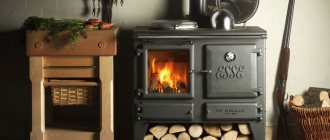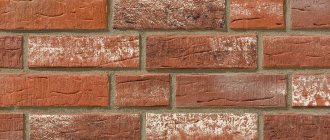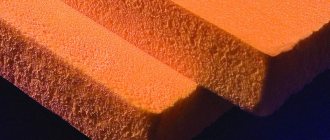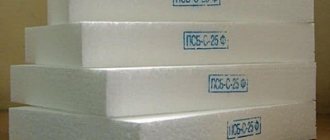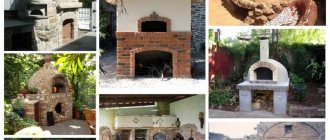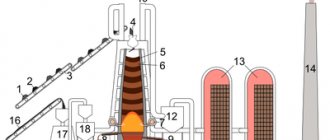In this article I will tell you about such an important and interesting unit as a muffle furnace.
The use of such furnaces is varied, but the principle of operation is the same - heating various parts and materials to the required temperature and heat treatment. Is it known that jewelry workshops, ceramics studios or pottery workshops use muffle furnaces in their production?
I note that you can purchase a ready-made stove, but its cost is often very high. However, making a muffle furnace with your own hands is quick and quite easy if you have all the materials. You will also find informative information about all this in this article.
What is a muffle furnace
Muffle furnaces are equipment for heating various materials - ceramics, gold, silver, platinum, chemicals. They have a wide range of features and are used almost everywhere.
The electric muffle furnace is used for heat treatment of materials in many industries, mainly chemical laboratories and scientific institutes. The muffle used in it is mainly ceramic.
In technically outdated furnaces, the scope of application of muffle furnaces is limited to a maximum temperature of 1150 degrees. This is explained by the location of the heating elements behind the ceramic muffle, which does not allow the use of these units at working space temperatures above 1150 degrees.
This occurs due to the need to increase the temperature on the heating elements above their possible level of use.
To reduce the temperature transition between the temperature inside the muffle and the heater, the muffle is made of ceramic.
The operating principle is also characterized by high power consumption, since the massive muffle does not heat up quickly. This explains the use of muffles made of fibrous materials by some manufacturers. In such an oven, the heating elements are located inside.
The principle of operation of the device is the elimination of direct radiation from heaters on a material that can be heat treated.
However, the fiber muffle has a serious drawback: the fiber is unstable to gas evolution, which occurs especially actively during firing of ceramics and metal processing. The release of salts and burning of oil destroys the fiber.
A muffle furnace with a remote heating control unit is a new branch in the development of electric resistance furnaces.
The working chamber is made of high-temperature and durable thermal insulating material.
The heaters are located in the grooves of the electric furnace, which makes them easier to replace and prevents them from shorting out when they come into contact with the charge.
It can be used at standard temperatures from 50 to 1250 degrees, but can be manufactured up to 1600 degrees.
Muffle furnaces are used for their intended purpose for firing, hardening metals and steel at high temperatures, and various laboratory tests.
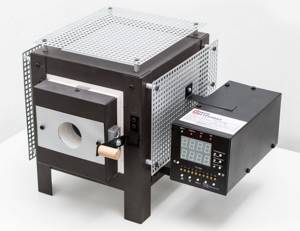
Today there is a wide variety of this type of furnace, but each of them can be used for separate options for processing and hardening the material, namely:
- obtaining and creating special jewelry made of silver and gold;
- using high temperatures to melt precious metals and damaged products;
- creating a more durable structure and firing of ceramic-based products;
- formation of the necessary product and smelting based on wax;
- hardening of metal products, production of molds for metal casting.
Furnace heating components
These devices in an electric oven have two types: closed and open. In the case of closed heaters, their location is inside the muffle, where they heat the cultivated material to the desired temperature. Heating elements are deliberately placed under the protection of the muffle, in order to avoid exposure to harmful substances when they are released from exposure to high temperatures, so that they do not form corrosive processes. In addition, the design of the muffle, the main working volume of muffle furnaces, protects the heating mechanisms from damage or contact with their charge surfaces. And the workpiece itself, which is heated, reaches the required temperature without the formation of scale.
Open type heaters heat up the oven more quickly and distribute the temperature evenly throughout the working chamber. They are easier to repair and replace with new ones, due to free access to their installation and fastenings. If there is a need to remove harmful fumes from the chamber and achieve a high level of temperature uniformity, fans are mounted on one of the walls of the working chamber. The material from which the heating elements are made is fechral, which was previously unknown, but thanks to modern technologies it was possible to obtain this alloy, which satisfies all the necessary characteristics for the manufacture of filament. The main element of the heater is a fechral thread, which is wound on a clay tube in a spiral. In the standard version of a muffle furnace, this type of heater is usually installed on both sides for more uniform heating of the cultivated material. In some cases, when the cultivated materials require it, a tubular heater can be installed not only on the sides, but also on the roof of the working chamber, not only as an additional heat source, but also due to the triple point of influence of more uniform heating. The average trouble-free operation of this type of heater is about 2500 hours, and may vary depending on the frequency of use of the muffle furnace.
If during heat treatment the main focus of the unit’s activity is due to hostile and harmful substances, then in addition to the main equipment, additional mechanisms must be connected to eliminate or weaken the effects of the harmful substances described above. A particular threat to heating elements is carbon, which is released during the combustion of oil, paraffin, wax and similar materials. This chemical element in the form of soot accumulates on the plane of the heater and the walls of the working chamber itself, which can cause short-circuits and overheating of the heaters. In order to remove all bad substances from the chamber, the oven can be equipped with a supply dust exhaust ventilation system, special drain outlets, a grated bottom to remove dirt particles and other things. In most cases, when purchasing a new muffle furnace, it should come with a spare heater of the same type that was installed inside the device from the factory.
Types of muffle furnaces

Muffle furnaces are divided according to the type of heating:
- Electric muffle furnaces are a type of chamber electric resistance furnaces.
- Gas muffle furnaces.
According to the protective treatment mode:
- Air: heating in air (general purpose).
- With a protective gas atmosphere: heating in a special gas environment (hydrogen, argon, helium, nitrogen, reducing gases, nitriding gases, etc.).
- Vacuum: heating in a vacuum.

By design:
- Vertical loading (potted).
- Bell-type (with separation from the hearth).
- Horizontal loading (simple).
- Tubular (verification of thermocouples).
To buy a muffle furnace, you first need to decide for what purpose it will be used, what size the workpiece or chemical samples will be heated in it and to what temperature.
The size and heating temperature of the working chamber is very important because... The price largely depends on these two parameters.
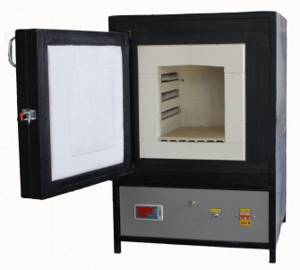
Currently, there are many muffle furnaces on the market with a variety of names:
- laboratory muffle furnace;
- jewelry muffle furnace;
- dental muffle furnace;
- industrial muffle furnace;
- training muffle furnace.
From all the variety, it is not always possible to choose a muffle furnace according to the specified parameters and at an affordable price.
Therefore, we will try to figure out what unites all these muffle furnaces and what their differences are.
Laboratory muffle furnace
Laboratory muffle furnace - used in the laboratory and carried out in it, many different tests with materials: heat treatment (heating, hardening, firing) analytical work, laboratory chemical analyzes with maximum accuracy of heating and control of the set temperature, so they are bought with program control and heating temperature from 1100 degrees.
Jewelry muffle furnace
A muffle furnace for jewelers is used for melting precious metals, so it can be classified as a professional jewelry melting furnace.
Most often, jewelry muffles are purchased for melting silver, gold and platinum.
To choose a suitable jewelry melter for melting such metals, you need to proceed from the melting temperature of gold, silver, platinum, etc.
When working with precious metals in a jewelry furnace, you don’t need to save on cost and buy a jewelry furnace with 30 temperature control programs and PID automatic control.
Unlike a laboratory muffle furnace, a jewelry muffle furnace must be selected according to slightly different technical parameters.
A jewelry muffle furnace must have a working chamber size of maximum 200×200×200 mm and a heating temperature of no more than 1200 degrees Celsius.
Since the jeweler works with a small amount of precious metal, there is no point in overpaying for a large volume of the working chamber.
Dental muffle furnace
In dentistry, a muffle furnace is most often used for drying, firing, and heating (orthopedic dentistry).
Muffle furnaces for ceramics are most often purchased for dentistry with a heating temperature of 1100 to 1200 degrees Celsius. With a working chamber size from 100×100×100 mm to 200×200×200 mm.
For such specialization, a muffle furnace with a small volume of the working chamber is suitable, from 100×100×100 mm to 200×200×200 mm, but more is possible.
Industrial muffle furnace
The differences between industrial muffle furnaces and all others are the size of the working chamber, no less than 200×200×200 mm and the heating temperature of the working chamber from 1400 degrees to 1750 degrees (it can be heated higher, but when heated to 1800 degrees the heating element quickly becomes unusable).
In this case, the price of the muffle depends not on the size of the working chamber, but on the heating temperature.
In industrial production, they try to use muffle furnaces with the maximum temperature and configuration because The activities of such enterprises are very extensive and these units perform many functions; practically, the operation of such furnaces is carried out according to all parameters.
Training muffle furnace

If you need a training muffle furnace designed for annealing, hardening and firing, then a muffle furnace with a maximum heating of the working chamber of 1100 degrees and with a standard working chamber size of 100 × 100 × 100 will suit you. Such furnaces are usually called “mini muffle furnace” or “small muffle bake".
To choose a muffle furnace, you need to consider what knowledge you want to achieve when working with a muffle furnace.
Muffle furnaces range from simple ones (at the level of using a household microwave oven) to complex muffle furnaces, which are controlled via a personal computer or laptop.
Distinctive features of laboratory electric furnace models
When choosing a model of a laboratory high-temperature electric furnace, you should take into account the main parameters they differ in.
— Maximum heating temperature : this parameter is one of the main ones that should be considered when choosing a model. Modern models of electric furnaces are capable of maintaining the temperature in the chamber up to 900-1300 degrees Celsius. When selecting a model, you should take into account the requirements of the methods by which the research is planned.
— Chamber volume . In laboratory electric furnaces, the chamber volume is usually small, ranging from 2 to 15 liters. Along with the maximum temperature, this parameter is the main one, which affects the cost of the device and the possibility of its use.
— Heater type: closed (insulated), open or semi-open. Models up to 1000 gr., as a rule, use closed heating elements. The chamber material prevents heat treatment products from affecting the heating elements and ensures uniform heating of the chamber volume. But to achieve higher temperatures, open or semi-open heating elements are used. The chamber is heated, as a rule, from three or four sides.
— Type of thermostat . Typically, routine laboratory work requires heating to a certain temperature and maintaining it for a certain time. In this case, you can choose a model with a simple (sometimes called basic) single-stage thermostat. If the model is used for research scientific purposes, a more complex programmable multi-stage thermostat may be required, which will allow you to set a step-by-step temperature change, holding time, and rate of temperature change. Obviously, models with a programmable thermostat, all other characteristics being equal, will have a significantly higher price than those with a conventional digital controller.
— Availability of a special system for supplying air and removing combustion products (forced ventilation). This option is necessary when conducting studies during which combustion products are intensively released, for example, during the process of ashing samples. To place the muffle furnace in the laboratory, special fume hoods are used.
— Heating chamber material : ceramics or thermal fiber. A ceramic chamber takes longer to heat up, but is also stronger and more chemical resistant. The fiber chamber heats up and cools down faster, allowing for faster work and saving energy. The cost of models with a ceramic camera is higher than those with a fiber camera.
— Ability to connect a computer . This option is provided in some models, but is mainly used when conducting scientific research.

As an example of a muffle furnace with an air supply and exhaust system for combustion products, we can consider a model of the SNOL trademark.
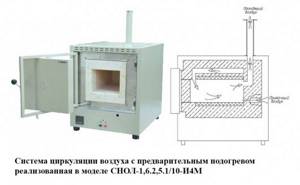
Before air is supplied to the chamber, it is heated by passing through channels with electric heaters. Preheating the air ensures uniform temperature distribution in the chamber. The heaters in this model are insulated, which avoids their contact with gases, aerosols and soot released during the ashing process. The use of insulated heaters has a positive effect on their service life. The chamber is made of ceramic and has a smooth surface, which makes it easy to clean.
When planning to purchase a muffle furnace, it is worth considering in advance the need to install an exhaust device, because its installation is carried out directly at the manufacturer and it will not be possible to install it yourself later.
Why is a muffle furnace needed?
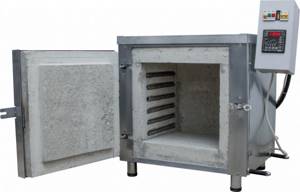
The muffle furnace is used:
- For heat treatment.
The heat treatment of muffle furnaces includes (quenching, annealing, tempering, normalizing, firing).
Heat treatment of metals and alloys is carried out in it in order to improve their service properties.
- For annealing (homogenization and normalization).
The goal is to obtain a uniform grain microstructure and dissolve inclusions. Subsequent cooling is slow, preventing the formation of nonequilibrium structures such as martensite.
- Dispersion hardening (aging).
After annealing, heating is carried out at a lower temperature in order to release particles of the strengthening phase. Sometimes stepwise aging is carried out at several temperatures in order to isolate several types of strengthening particles.
- For hardening the material.
Hardening in a muffle furnace is carried out with an increased cooling rate in order to obtain nonequilibrium structures such as martensite (increased hardness). The critical cooling rate required for hardening depends on the material.
- For material release.
Tempering in a muffle furnace is necessary to relieve internal stresses introduced during hardening. The material becomes more plastic with a slight decrease in strength.
- For combustion (ashing).
The method is used when there is a special task to examine objects of biological origin for the presence of manganese, copper and some other metals.
- For drying.
Drying in a muffle furnace is the deliberate removal of moisture (usually water, sometimes a liquid fraction of an arbitrary chemical composition) from a material.
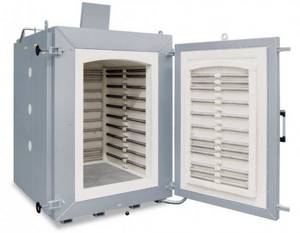
Firing is most often carried out in muffle furnaces.
When firing ceramic products in a muffle furnace, complex physical and chemical processes occur, as a result of which the ceramic mass - a mechanical mixture of mineral particles - becomes a stone-like material - durable, hard, chemically resistant, with aesthetic properties inherent only to it.
Firing of ceramic products is an important and final stage of the technological process of ceramic products, the final and important stage of any ceramic production.
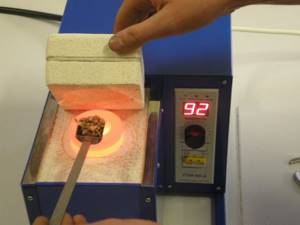
Firing is also used by jewelers for firing jewelry and art items made of non-ferrous metals.
When raw material is fired in a muffle furnace, an artificial stone material is formed, which, unlike clay, is not washed away by water and has relatively high strength. This is explained by physicochemical processes occurring in clay under the influence of elevated temperatures.
When raw ceramic products are heated in a muffle furnace to 110 degrees, free water is removed and the ceramic mass becomes non-plastic. The total costs of firing reach 35-40% of the cost of commercial products.

The laboratory muffle furnace is designed for laboratory analyzes (cupellation).
Laboratory tests - oxidative melting of an alloy of lead with gold or silver in order to isolate them in their pure form.
Cupellation in a muffle furnace is based on the fact that lead and other base metals are easily oxidized by atmospheric oxygen at high temperatures, while gold and silver do not change.
Possible problems when creating a furnace

When manufacturing a device, difficulties arise with the selection of material and installation of a temperature control system.
Incorrectly selected materials lead to rapid destruction of the muffle.
Thus, some craftsmen, to save money, use low-quality bricks and clay-sand mortar instead of fireclay. This leads to cracks in the muffle and heat loss.
The cracked muffle is temporarily sealed with a solution of fireclay clay. The camera needs to be removed and replaced with a new one.
If the furnace is connected to the network without a thermostat, the temperature in the muffle is not controlled. This leads to damage to products that require firing at a given temperature.
To solve the problem, you should purchase a thermostat and electrical equipment, assemble a control unit and connect it to the heating elements of the muffle.

For ease of assembly, it is better to make it with removable front and back covers that are secured with screws. A door is attached to the front cover on a hinge, which should open horizontally. A ceramic element is installed on the door using two bolts through asbestos gaskets, and the gaps are sealed with clay.
The ends of the nichrome wire are brought out to the back cover of the case. Ceramic insulating “beads” must be strung on both terminals. The wire is attached to the pin connector. Such connectors, as well as insulating “beads,” can be taken from old electrical appliances. A standard cord with a plug will be attached to the connector for connection to the electrical network.
All free space between the heating elements and the housing should be tightly filled with asbestos chips. In addition, the design of the furnace must provide a grounding terminal.
For ease of work, two small holes need to be made in the heating chamber: one on the back wall with a diameter of 10 mm - for installing a thermocouple, the other on the door with a diameter of 18-20 m - to observe the interior of the furnace during operation. Both openings must be equipped with closing metal curtains.
A lining plate made of thin stainless steel 0.5–0.8 mm should be placed at the bottom of the working chamber.
The oven is designed for 220 V AC. Heats up to a maximum temperature of 950 degrees within an hour. The weight of the stove is about 10 kg.
